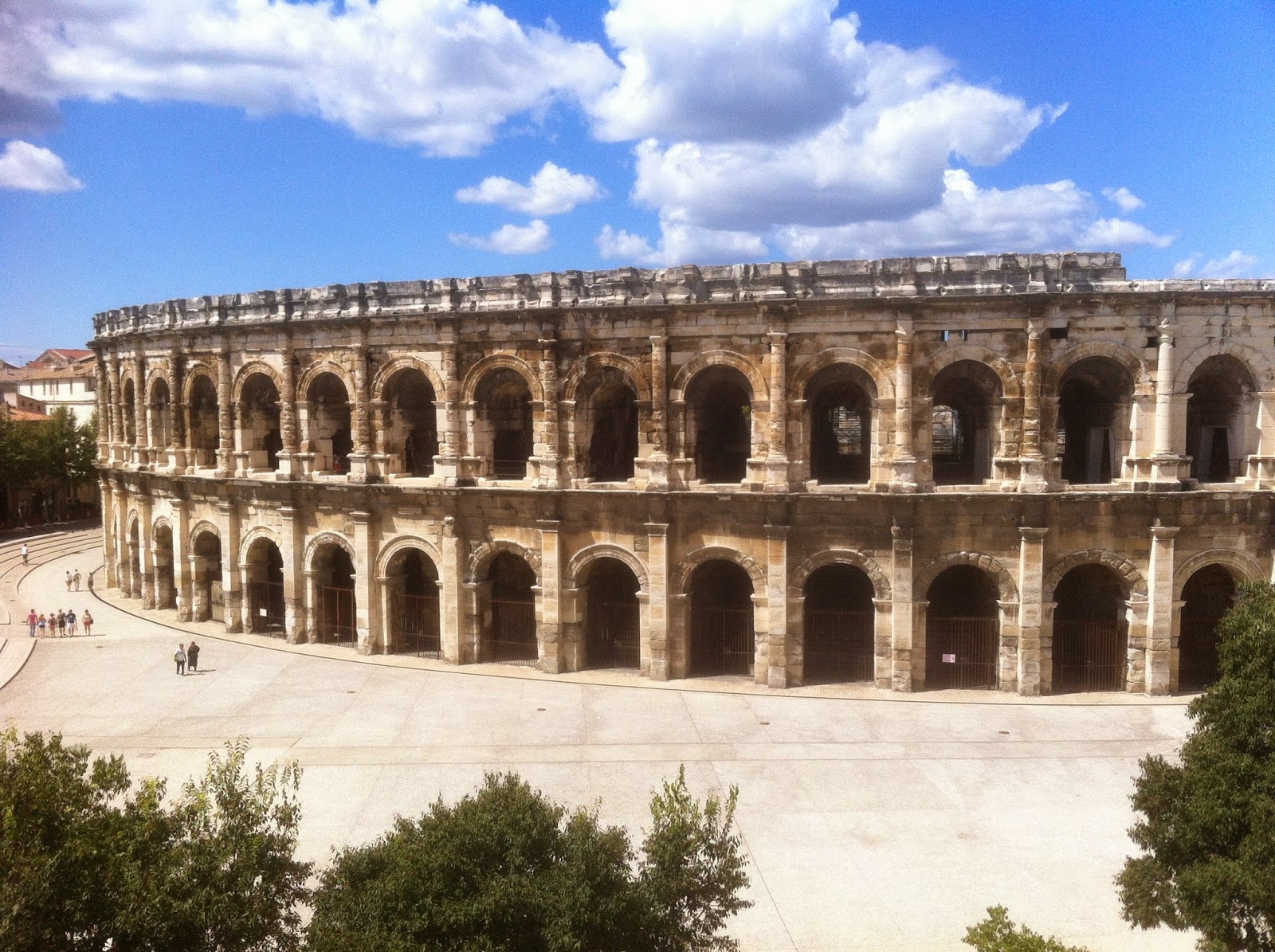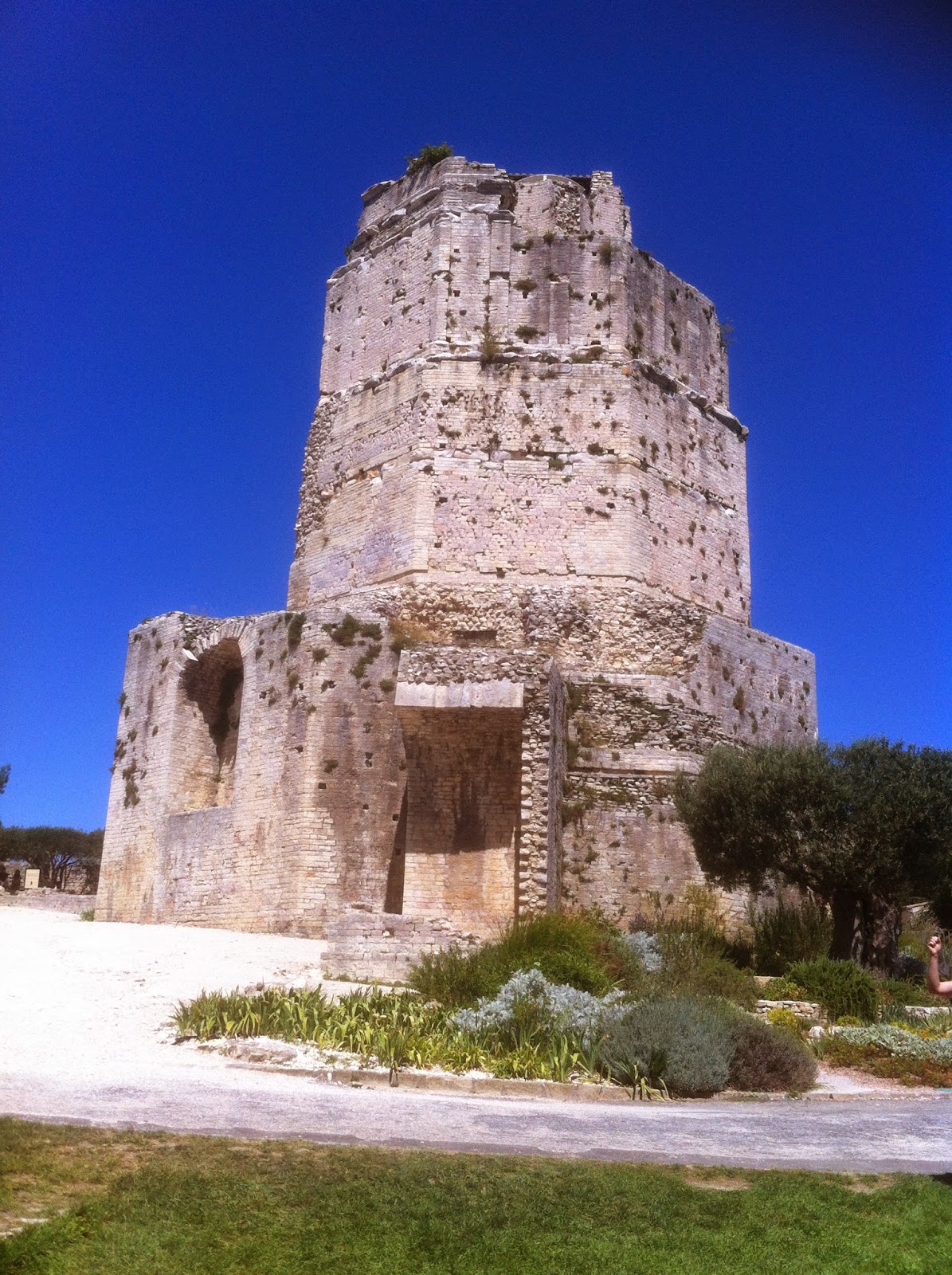Nimes is said to be named after Nemausus, a local
Celtic deity and guardian of water and local springs, alternatively, Nemosius the son of
Heracles. We shall never know so its probably best to stick with Nimes and history with a little more accuracy.
In 55 BC Julius
Caesar asked the local Volcae to fight with him against the northern Gauls. After
thirty years of fighting with Caesar and his successor Augustus the Volcae
leader, Adgennix was given Roman citizenship and Nemausus was made an
autonomous city within the Roman empire - but
given a Roman name: Colonia Augusta Nemausus. But we’ll
call it Nimes.
I have enough trouble with French – and grief from my daughter for invariably
pronouncing the silent ‘s’ in Nimes.
And now that the
history lesson is over (well not quite, there’s a bit more to come) I can show
some holiday snaps with a tad less guilt
The view from our bedroom window, the amphitheatre.
It was built towards the end of the second century Ad. When the Roman empire fell and Nimes became part of a Visigoth kingdom local people sheltered there, using it as a kind of fortress. By 725 A D Nimes was briefly absorbed by the Umayyad Moslems until, in 737 AD Charles Martel and the Franks briefly siezed the city, destroying much of the amphitheatre and other great buildings. . What's interesting is that the local Gallo-Roman and Visigoth nobility sided with the Moslems and not the Franks. Muslim rule in the city didn't end until 754 when Pepin the Short drove them out.* The new Carolingian aristocracy installed themselves in the amphitheatre - and at night after sufficient wine you sense their presence still.
And at night
In fact at night it becomes quite ghostly
As does much of Nimes
Those Volcae soldiers who fought in Caeser's Nile campaigns were clearly impressed with the crocodile. Wherever you go in Nimes you see the emblem of a crocodile under a palm tree. This looks quite a friendly crocodile.
As well as building the Amphitheatre and littering the place with crocodiles and palm trees the Romans built a Forum, now one of the best preserved buildings in the former empire:
Le Maison Carrée
The local Volcae had a small defensive tower on this hill. The Romans, on the basis of mine is bigger than yours built a defensive wall around the city culminating in the Tour Magne. You can access the top via an internal staircase and see half of Provence.
And lastly, to echo 'what did the Romans ever do for us?' from Life of Brian, they built the incredible Pont du Garde. The aquaduct carried water to Nimes from springs 31 miles away. Much of the structure is underground but, faced with hills and valleys, Roman engineers didn't flinch. The Pont du Garde is the highest of all Roman aquaducts and takes the breath away even today. It carried an estimated 44,000, 000 gallons of water a day to the fountains, baths and homes of the people of Nimes.
Now it just carries people.
We had everything on this holiday, good food, wine, and water. Wherever ever you went you saw or heard water.
Below was a water and fire spectacular orchestrated to stirring music. This park, le Jardin du Fontaine, leads up to the hill where the Tour Magne looks over the city
And lastly, what would life be without night time dancing outside your window? I believe a national tango competition was taking place, though this does not appear to be a tango.
If you can bear it there will be two more posts - on Avignon and Arles. It is a family record after all :)
*This stuff about the Moors threw me and reveals yet again how you keep on learning - even History teachers. I was brought up on the story of Roland and how the Moors had been stopped at the Pyrenees. I had no idea - until now - that they had ever established themselves in France















No comments:
Post a Comment